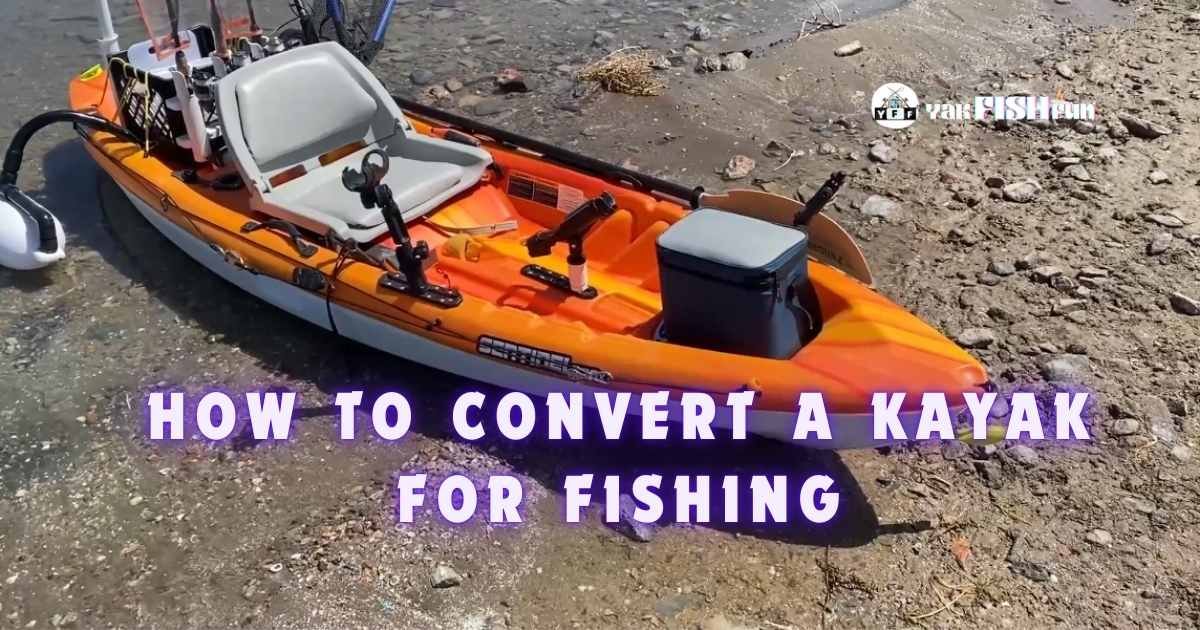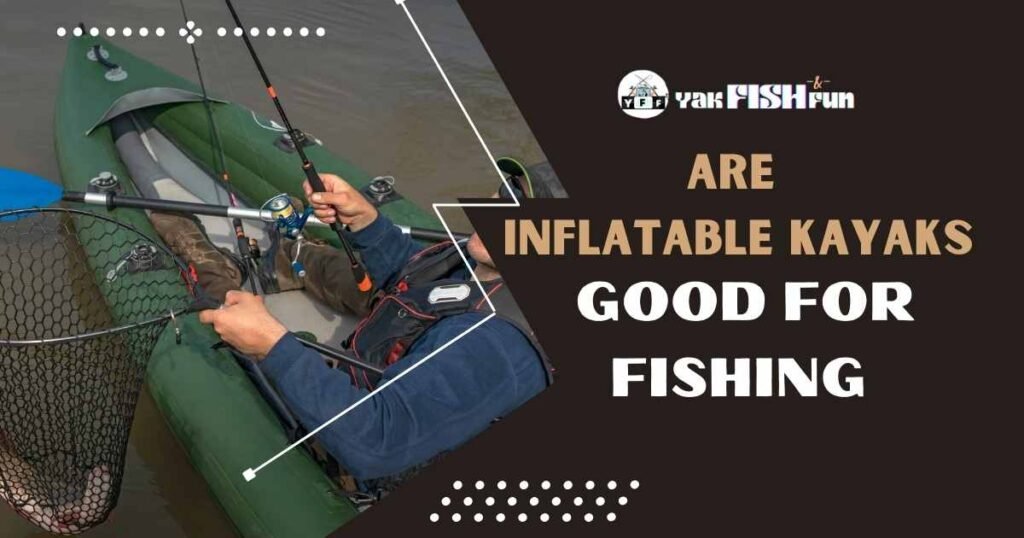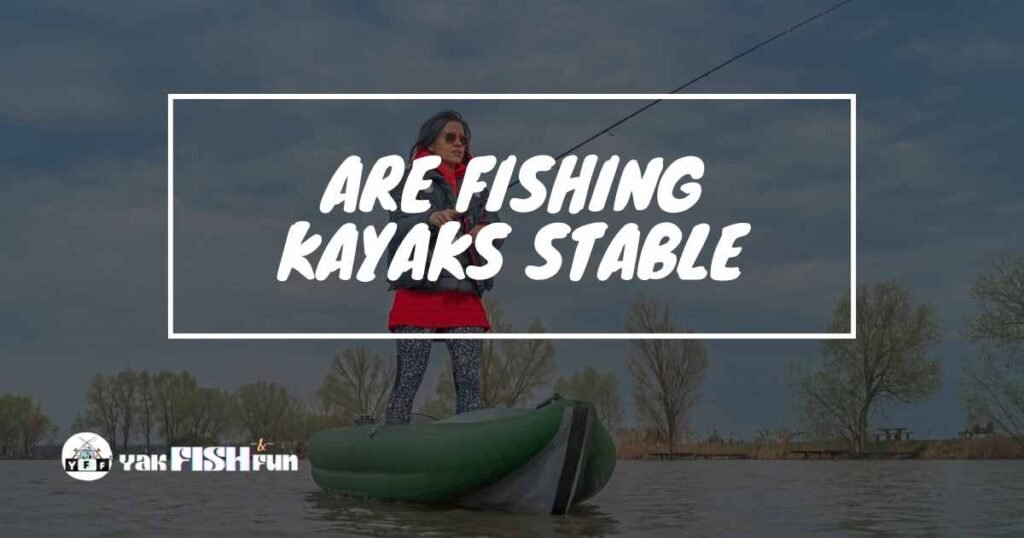Fishing from a kayak offers a unique and exciting experience. But can you convert a regular kayak for fishing? Yes, with a few modifications, you can transform a standard kayak into a fishing machine. You can start by installing rod holders to keep your hands free. But what about other fishing stuff? That’s why we’ve put together this guide.
This guide will walk you through the key steps and considerations for converting your kayak, from selecting the right accessories to ensuring proper installation and safety. Get ready to take your kayak fishing to the next level and enjoy the thrill of catching fish from your personalized watercraft.
Table of Contents

Step-By-Step Guide To Converting A Kayak For Fishing
Fishing kayaks are a bit different from regular ones. They typically include multiple rod holders, extensive storage options such as tackle box compartments and waterproof hatches, and anchor systems for maintaining position.
So converting a kayak for fishing involves several key modifications to enhance comfort and functionality.
Here’s a step-by-step guide to help you convert your kayak for fishing:
Step #1. Choosing The Right Kayak
Converting a kayak for fishing starts with choosing the right kayak. The right kayak ensures comfort, stability, and enough space for gear. Here, we will explore the types of kayaks and the features to consider.
Types Of Kayaks
There are several types of kayaks you can use for fishing. Each type has its own benefits and drawbacks.
- Recreational Kayaks: These kayaks are great for calm waters. They are easy to paddle and handle.
- Sit-on-Top Kayaks: These are popular for fishing. They offer more stability and easy access to gear.
- Inflatable Kayaks: These are portable and easy to store. They are suitable for those with limited storage space.
- Fishing Kayaks: Specifically designed for fishing. They come with built-in rod holders and storage compartments.
Features To Consider
When choosing a kayak for fishing, consider the following features:
| Feature | Importance |
| Stability | Ensures you can stand and cast without tipping over. |
| Storage Space | Needed for keeping fishing gear and catches. |
| Comfort | Important for long fishing trips. Look for padded seats and adjustable footrests. |
| Rod Holders | Essential for holding fishing rods securely. |
| Weight Capacity | Must support your weight and all your gear. |
Choose a kayak that suits your needs and fishing style. This will make your fishing adventures more enjoyable and productive.
Step #2. Essential Fishing Gear
Transforming a kayak into a fishing vessel requires specific gear. This gear enhances your fishing experience. Below are crucial items you need.
Rod Holders
Rod holders keep your fishing rods secure. They prevent rods from falling into the water. Here are some types of rod holders:
- Flush Mount Rod Holders: Installed into the kayak’s hull.
- Deck Mount Rod Holders: Attached to the kayak’s deck.
- Clamp-On Rod Holders: Clamped onto the kayak’s sides.
Choose rod holders based on your kayak’s design and your fishing style.
Tackle Storage
Effective tackle storage keeps your fishing gear organized. Below are some options:
| Type | Description |
| Tackle Boxes | Portable boxes with compartments for lures and hooks. |
| Tackle Bags | Soft bags with multiple pockets and compartments. |
| Milk Crates | Plastic crates attached to the kayak’s rear. |
Consider the size and storage capacity of each option. This ensures you have easy access to your tackle while fishing.
Step #3. Installing Rod Holders
Converting your kayak for fishing adds excitement to your adventures. One of the first steps is installing rod holders. Rod holders keep your fishing rods secure and hands-free.
Types Of Rod Holders
There are various types of rod holders. Each type serves different needs:
- Flush Mount Rod Holders: These are installed into the kayak’s surface.
- Deck Mount Rod Holders: These are attached to the kayak’s deck.
- Adjustable Rod Holders: These can be tilted and rotated.
- Clamp-On Rod Holders: These can be clamped onto various surfaces.
Installation Tips
Follow these steps to install your rod holders:
- Choose the Location: Pick a spot within easy reach.
- Mark the Spot: Use a marker to outline the rod holder base.
- Drill the Holes: Use a drill to make holes for screws.
- Attach the Rod Holder: Secure the rod holder with screws.
- Seal the Edges: Use a waterproof sealant to prevent leaks.
Using these tips, you can install rod holders easily. This makes your kayak fishing ready!
Step #4. Adding Storage Solutions
Converting a kayak for fishing requires smart storage solutions. You need space for your gear, bait, and other essentials. Let’s explore the best ways to add storage to your kayak.
Crate Systems
Crate systems are a popular choice for kayak anglers. They are easy to install and provide ample storage. You can secure them with bungee cords or straps.
Crates can hold tackle boxes, fishing rods, and other gear. Some crates come with built-in rod holders. This keeps your rods safe and within reach.
Here’s a simple way to add a crate system:
- Choose a durable crate that fits your kayak.
- Attach bungee cords or straps to secure the crate.
- Add rod holders if your crate doesn’t have them.
Dry Bags
Dry bags are essential for keeping your gear dry. They come in various sizes and can store clothing, electronics, and food.
Place dry bags in inaccessible spots on your kayak, and secure them with carabiners or bungee cords. This ensures they stay in place during your trip.
Here’s a quick guide to using dry bags:
- Choose dry bags that suit your storage needs.
- Place items in the bags and seal them tightly.
- Secure the bags in your kayak using carabiners or bungee cords.
Step #5. Enhancing Stability
Fishing from a kayak is fun but can be wobbly. Enhancing stability makes fishing safer and more enjoyable. Here are some ways to make your kayak stable for fishing.
Outriggers
Outriggers are like training wheels for your kayak. They are floats attached to the sides of the kayak. These floats help balance the kayak, making it less likely to tip over.
- Easy Installation: Outriggers are simple to install.
- Affordable: Many outrigger kits are budget-friendly.
- Effective: They greatly improve stability.
| Outrigger Type | Cost | Stability Level |
| Inflatable Outriggers | $$ | High |
| Solid Outriggers | $$$ | Very High |
Stabilizing Techniques
Using the right techniques can make your kayak more stable. Here are some tips:
- Low Center of Gravity: Sit lower in the kayak to stay balanced.
- Weight Distribution: Spread your gear evenly to avoid tipping.
- Paddle Properly: Use a steady and even paddle stroke.
- Practice: Spend time getting used to your kayak.
Using these stabilizing techniques will make fishing from your kayak safer and more fun.
Step #6. Comfort Upgrades
Comfort is essential for a successful fishing trip. Upgrading your kayak ensures a pleasant experience on the water. Let’s explore some key comfort upgrades.
Seating Options
Comfortable seating can make or break your fishing adventure. Many kayaks come with basic seats that lack padding. Consider upgrading to a padded seat for added comfort. Look for seats with adjustable backrests for better support.
- Padded Seats: These seats provide extra cushioning. Paddling becomes less tiring.
- Adjustable Backrests: Support your back and reduce strain. Easily find your perfect posture.
- Swivel Seats: Swivel seats allow you to turn without twisting your body. This is great for casting and reeling.
Footrests
Proper foot support helps maintain balance and reduces fatigue. Adjustable footrests are ideal for achieving comfort.
| Type | Benefits |
| Fixed Footrests | Simple and durable. They suit paddlers of a specific height. |
| Adjustable Footrests | Customizable to fit different leg lengths. They offer better comfort. |
| Pedal Systems | Allow hands-free operation. Great for fishing while paddling. |
Choose footrests that suit your needs and enhance your fishing experience.
Step #7. Safety Considerations
Converting a kayak for fishing requires careful attention to safety. Your safety on the water is paramount. Below are some essential safety considerations to ensure a secure fishing experience.
Life Jackets
A life jacket is a must-have for any kayaking adventure. Choose a life jacket that is designed for kayaking and fishing. It should fit snugly yet comfortably.
- Ensure the life jacket has sufficient buoyancy.
- Check for multiple adjustment points for a secure fit.
- Look for pockets to store small fishing tools.
Remember, always wear your life jacket. Even if you are an experienced swimmer, unexpected accidents can happen.
Emergency Gear
Having the right emergency gear can save lives. Equip your kayak with essential safety items.
| Item | Purpose |
| First Aid Kit | Treat minor injuries |
| Whistle | Signal for help |
| Waterproof Flashlight | Visibility in low light |
| Navigation Tools | Compass or GPS |
Store emergency gear in an easily accessible spot. Test your gear before heading out to ensure it works properly.
Step #8. Electronics And Accessories
Now, it’s time to add electronics and accessories. These tools help you locate fish and navigate waters safely.
Fish Finders
Fish finders are crucial for any fishing kayak. They help you identify fish below the surface. Modern fish finders use sonar technology to detect fish. These devices show fish locations on a screen.
- Install the transducer under your kayak.
- Mount the display screen within easy reach.
- Choose a model with a clear, bright display.
Some fish finders also show water depth and temperature. This information helps you decide where to fish. Select a fish finder that fits your fishing needs.
Gps Systems
GPS systems are essential for navigation. They help you mark fishing spots and find your way back. A good GPS system tracks your route and saves locations.
- Mount the GPS device on your kayak.
- Choose a waterproof model for durability.
- Look for a system with a large, clear screen.
Some GPS systems also include maps of popular fishing areas. These maps help you find new fishing spots. You can also set waypoints to mark your favorite locations.
You can also install a trolling motor for speed. This can turns your kayak into a powerful fishing machine. Make sure to choose models that fit your kayak and fishing style.
Bottom Line
Converting your kayak for fishing can make your time on the water much better. By adding the right accessories, like rod holders, tackle storage, fish finders, and anchor systems, you can customize your kayak to fit your fishing needs. These upgrades will help you fish more effectively and comfortably. Just remember to keep safety in mind and regularly check your gear. With your newly equipped kayak, you’ll be ready to discover new fishing spots and have a great time catching fish from your personalized kayak.


